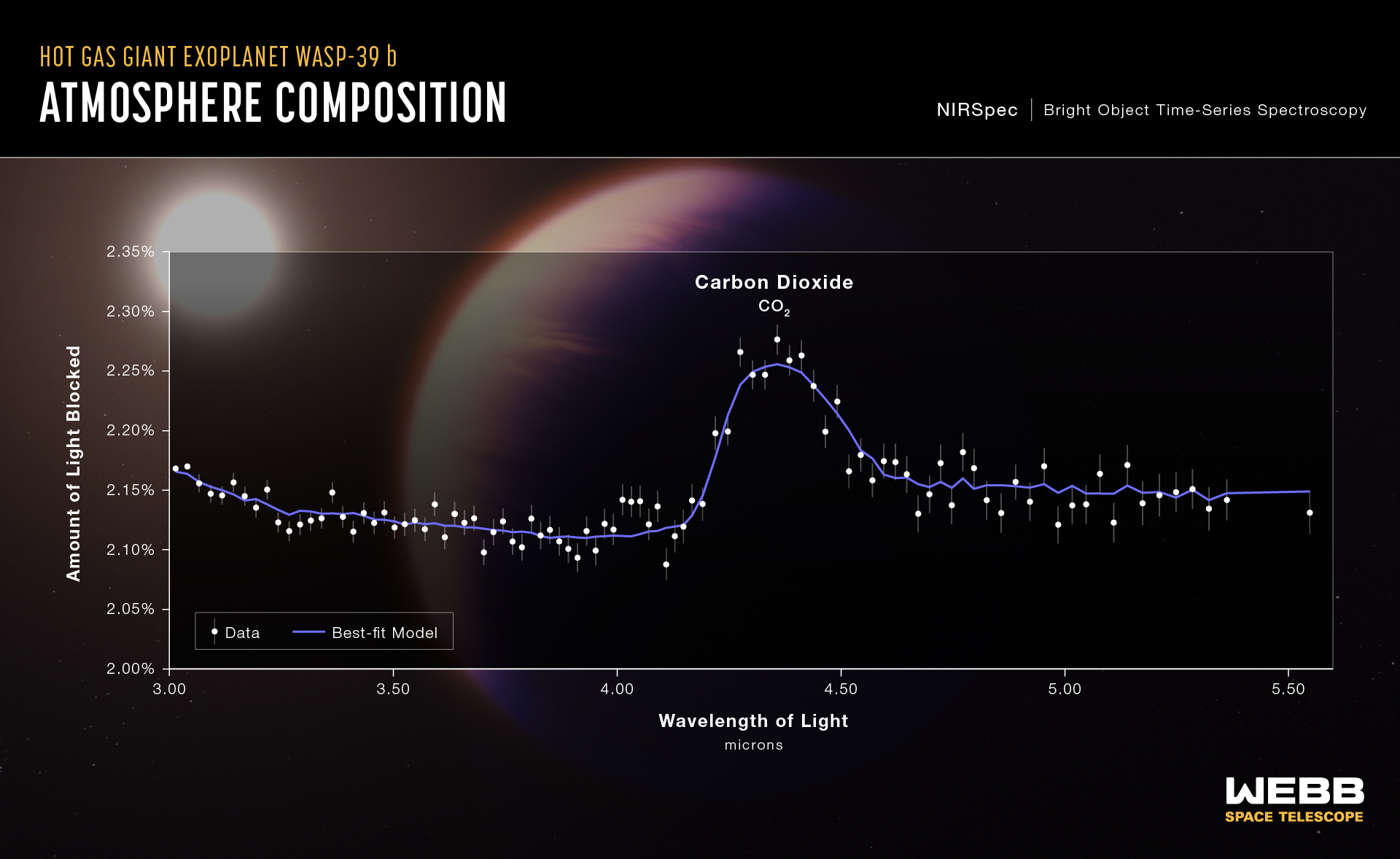Image List
-

This illustration shows what exoplanet WASP-39 b could look like, based on current understanding of the planet.
Data collected by JWST’s Near-Infrared Spectrograph (NIRSpec) shows unambiguous evidence for carbon dioxide in the atmosphere, while previous observations from NASA’s Hubble and Spitzer Space Telescopes, as well as other telescopes, indicate the presence of water vapor, sodium, and potassium. The planet probably has clouds and some form of weather, but it may not have atmospheric bands like those of Jupiter and Saturn.
This illustration is based on indirect transit observations from JWST as well as other space and ground-based telescopes. JWST has not captured a direct image of this planet
NASA, ESA, CSA, Joseph Olmsted -

A transmission spectrum of the hot gas giant exoplanet WASP-39 b captured by JWST’s Near-Infrared Spectrograph (NIRSpec) on July 10, 2022, reveals the first clear evidence for carbon dioxide in a planet outside the solar system. This is also the first detailed exoplanet transmission spectrum ever captured that covers wavelengths between 3 and 5.5 microns.
A transmission spectrum is made by comparing starlight filtered through a planet’s atmosphere as it moves in front of the star, to the unfiltered starlight detected when the planet is beside the star. Each of the 95 data points (white circles) on this graph represents the amount of a specific wavelength of light that is blocked by the planet and absorbed by its atmosphere. Wavelengths that are preferentially absorbed by the atmosphere appear as peaks in the transmission spectrum. The peak centered around 4.3 microns represents the light absorbed by carbon dioxide.
The gray lines extending above and below each data point are error bars that show the uncertainty of each measurement, or the reasonable range of actual possible values. For a single observation, the error on these measurements is extremely small
NASA, ESA, CSA, Leah Hustak (STScI), Joseph Olmsted (STScI)